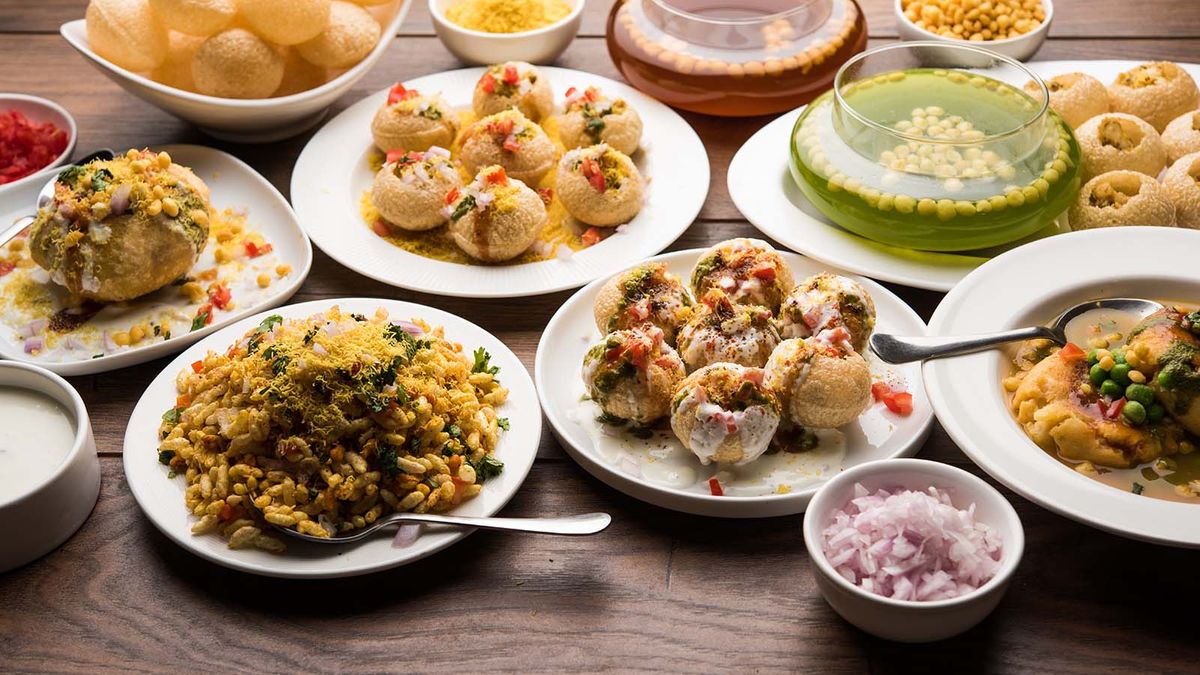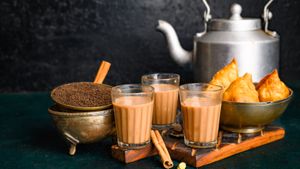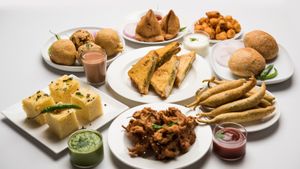Who doesn’t love chaat? In India, chaat is not just a set of snacks that are sweet, sour, tangy, spicy and crunchy. It’s a symphony of exotic flavours and textures. A group of foods without limits… a way of life! Chaat has been titillating the taste buds of Indians for centuries.
Who invented chaat?
There are several accounts on the origin of chaat, which literally means to lick. It’s said that chaat was so delicious that people licked their fingers and the donas (bowl made of peepal leaves) it was often served in. Some say it originated from the term ‘chatpati’ which means tangy or spicy.
Culinary historians credit it to Mughal emperor Shahjahan. Under his reign, a cholera outbreak took place in the 16th century. In those times water of River Yamuna (second largest tributary river of the Ganges in the North) was contaminated and not fit for consumption, leading to several water-borne diseases. It was the hakim (royal physician) who suggested mixing the water with liberal doses of spices like tamarind, coriander, mint, and red chilies to kill the bacteria. The food came to be called chatpati and marked the birth of chaat! No wonder the chaats of Old Delhi (also known as Shahjahanabad) are some of the best in the country. “Chaat stimulates the appetite whereas yoghurt and other chutneys aid in digestion. Temperature in northern India can reach extreme levels. Chaat helps to get heat out of your body,” says Sarfaraz Ahmed, head chef, Tresind Mumbai.
Chaat also finds a mention in the Vedas. For instance, dahi vadas are referred to in the Sutras which are 500 years old. According to food historian KT Acharya, vataka—made with lentil paste and soaked in thin milk—is prominently mentioned in the 12th century Manasollasa that also mentions the lentil dumpling soaked in sour, fermented rice water (kanjika). This may have been the earliest version of kanji-bade of Delhi and UP—urad dal dumplings soaked in fermented carrot water spiked with asafoetida and mustard. This treat is supposed to be good for the gut. Dahi bada may have eventually emerged from this. The fried papdis of today totally resemble the purikas mentioned in the text.
Some of the most popular chaat items of today are also rooted in our colonial past. Take aloo tikki, for instance, which is a spin on the English croquet. The migrant community of UP, as well as post-partition Sindhis who made Mumbai their home, influenced the chaat of the city.
Chaat is now a word used across the country to refer to small plates of spicy eatables, typically served at the roadside stalls.“It offers the palate a symphony of temperatures, textures, and flavours. Every dish is an amalgamation of sweet, salty, crunchy, spicy, and savoury ingredients. Imagine warm ragda with chilled dahi that is sweet, tangy, and spicy and the flavour of various chutneys. This combination comes with a play of textures like the creamy dahi, perfectly crunchy onions, sev or papdi, and more,” says Hussain Shahzad, executive chef at The Bombay Canteen and O Pedro.
Chaats of India

Just like biryani (Lucknow versus Hyderabad and the quintessential Kolkata) the debate on the city with the best chaat can probably instigate a civil war. In reality, nearly every city in North India has its own chaat culture. Varanasi, for example, is famous for its samosas, dubki wale aloo (potato dunked in thin, spicy gravy), and tamatar chaat. Winters are dedicated to malaiyo—the cloud-like sweet that melts in the mouth. Nimish, daulat-ki-chaat, malai makhan—the dish goes by many names in various parts of India. Chowk and Chowkhamba in the heart of Varanasi continue to be the hotbeds for malaiyo. Sunil Kumar serves one of the best versions of the daulat ki chaat from a pushcart in Chandni Chowk in the old city in Delhi which is also known for its stellar dahi bhalla, golgappa, aloo chaat, papdi chaat, and palak patta chaat. Chef Hussain suggests Natraj Dahi Bhalla near Chandni Chowk metro station. “This place has been around for over 80 years and I just love the soft, fluffy bhallas that they serve with sweet and tangy tamarind chutney, spicy green chutney, and a generous sprinkling of masala.”
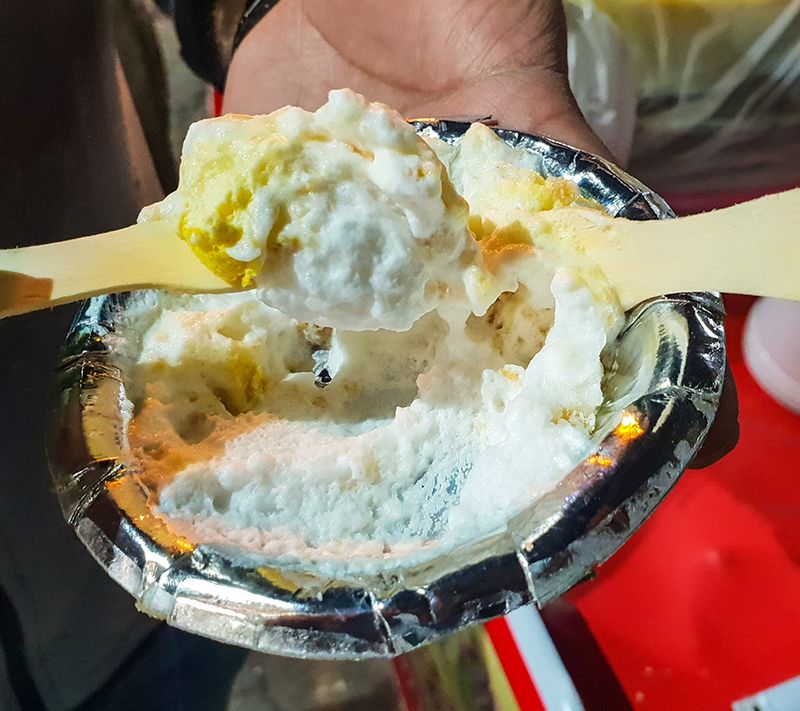
Indore’s famous chaat vendors of Sarafa Bazaar are streets ahead of others. Bhutte ka kees topped with fresh coriander, grated coconut, and lemon juice; purple yam, generously smothered in red chili powder; and kachoris, topped with sweet-and-spicy chutneys are a rage. Must try include the khopra patties served with tangy tamarind chutney at Vijay Chat House, doodh chana at Ganesh Namkeen, and the dal bafla (a close cousin of the Rajasthani dal baati churma) at Rajhans.
Aloo chaat rules in Kanpur. “One place you must try the aloo chaat in Kanpur is at Gadbad Chaat in Naveen market. The chutney served along with the fried baby potatoes is made using khatti palak which grows only in that area. The taste is unique and really amazing,” says Ahmed who also recommends the gol gappa (also known as batasha in Kanpur)at Shanker Batashe Wale.
But despite the intimidating flavours of North India, Mumbai can hold its own. The maximum city’s very own bhel puri, sev puri, dahi batata puri, and pani puri are unbeatable. Some say the bhel was invented at Chowpatty in Mumbai by migrants from northern India. They brought their spices and methods, mixed them with some flattened puris, thin sev, puffed rice, gathia, and sprouts from Gujarati farsan and created Mumbai’s very own bhel puri.
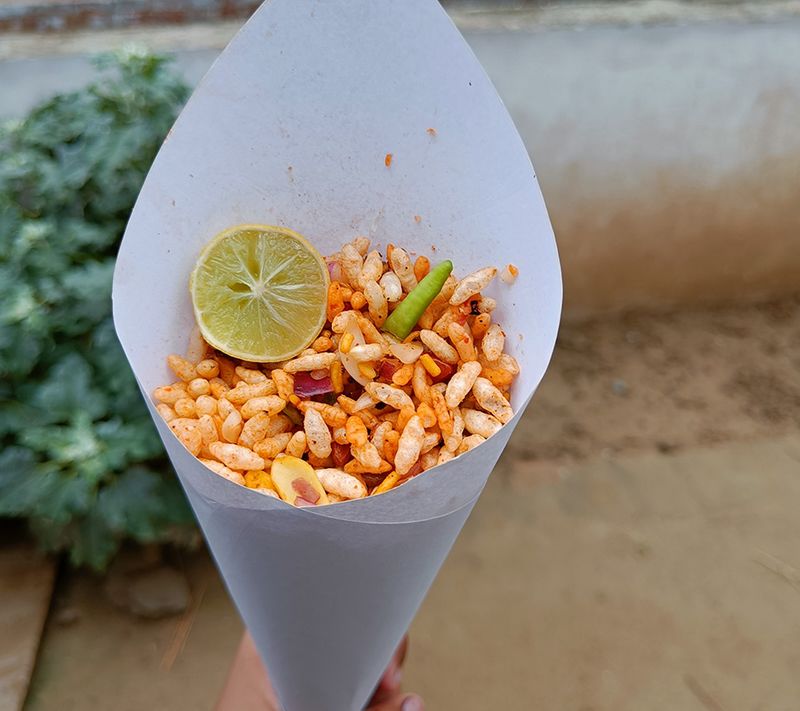
In Kolkata, the by-lanes are filled with street hawkers selling jhal muri. Rice puffs tossed with onions, tomatoes, bits of coconut, peanuts, chana chur, tamarind pulp, and a dash of mustard oil is a fitting snack for every mood. Spicy ghoogni made of tempered yellow peas cooked with tomatoes, onions, and spices is equally popular.
Chaat goes chic
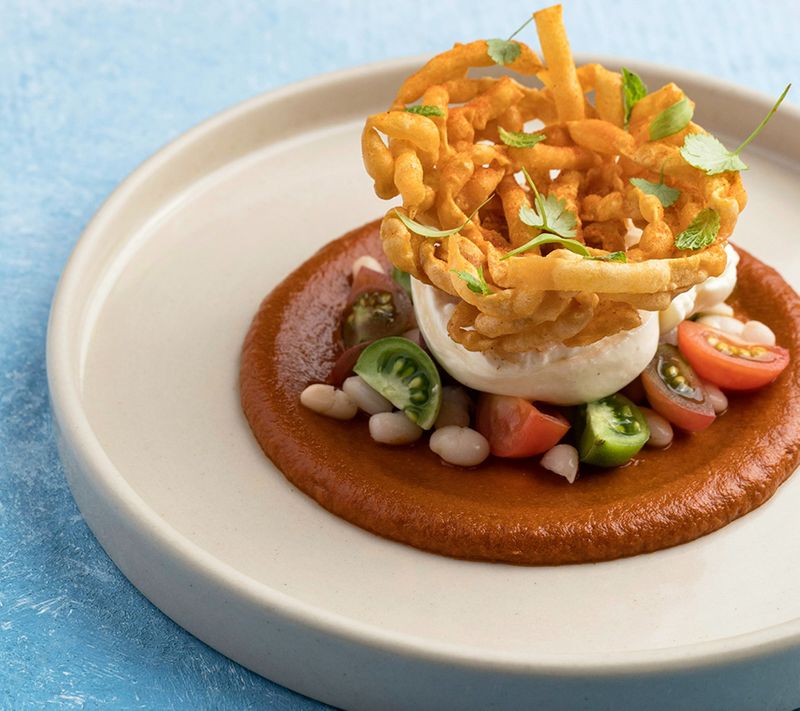
This humble street food is being reinvented in many high-end restaurants with chefs lending their unique twist to the chaat. The famous tamatar chaat of Varanasi gets a gourmet boost at The Bombay Canteen with a creamy burrata placed on a base of tangy tamatar puree with white beans and heirloom tomatoes dressed in aamchur chutney. The raj kachori comes with a ragda made of monsoon greens and topped with chutneys and crispies for the perfect crunch.
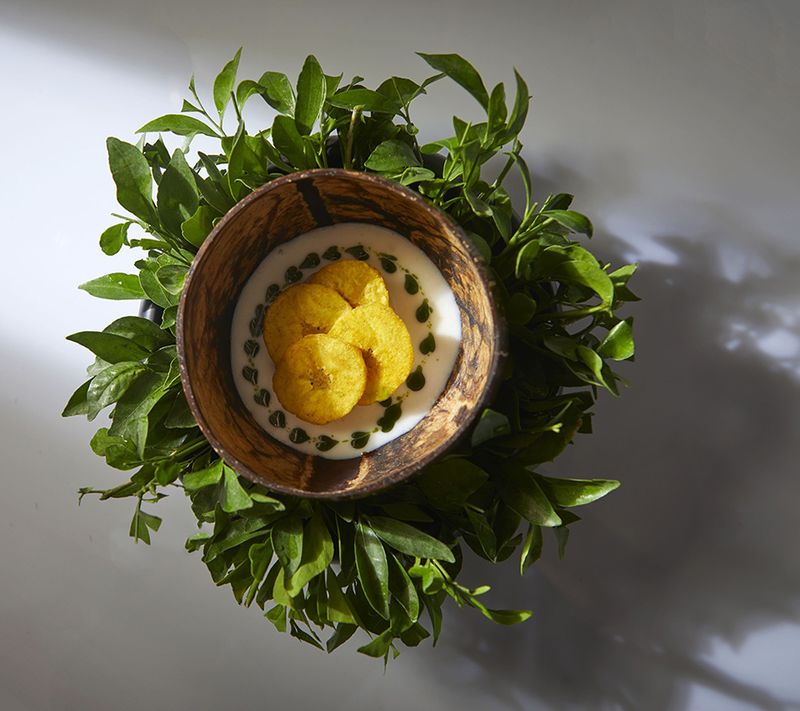
At Tresind, the chaat gets a southern treatment. Shallow fried raw bananas tossed in pickled spices get topped with coconut lassi and an array of chutneys which includes a curry leaf chutney and raw banana chips for crunch. “This gives you all the flavours of chat but in a southern style. It is presented in a coconut bowl perched on a bed of fresh flowers and leaves,” elaborates Ahmed.

While chaat is mostly a vegetarian preparation, The Bombay Canteen has been reinventing the snack using meat and seafood. Sev puri with a topping of chilled sea bass, zesty nimbu chunda, kairi chutney, and pickled chilies is one such example. Then, there is a pani puri with the unexpected duet of prawns in amchoor pani. The dishes titillate the taste buds while also stirring up nostalgia and bringing back fond memories. That’s what chaat is all about, isn’t it?


